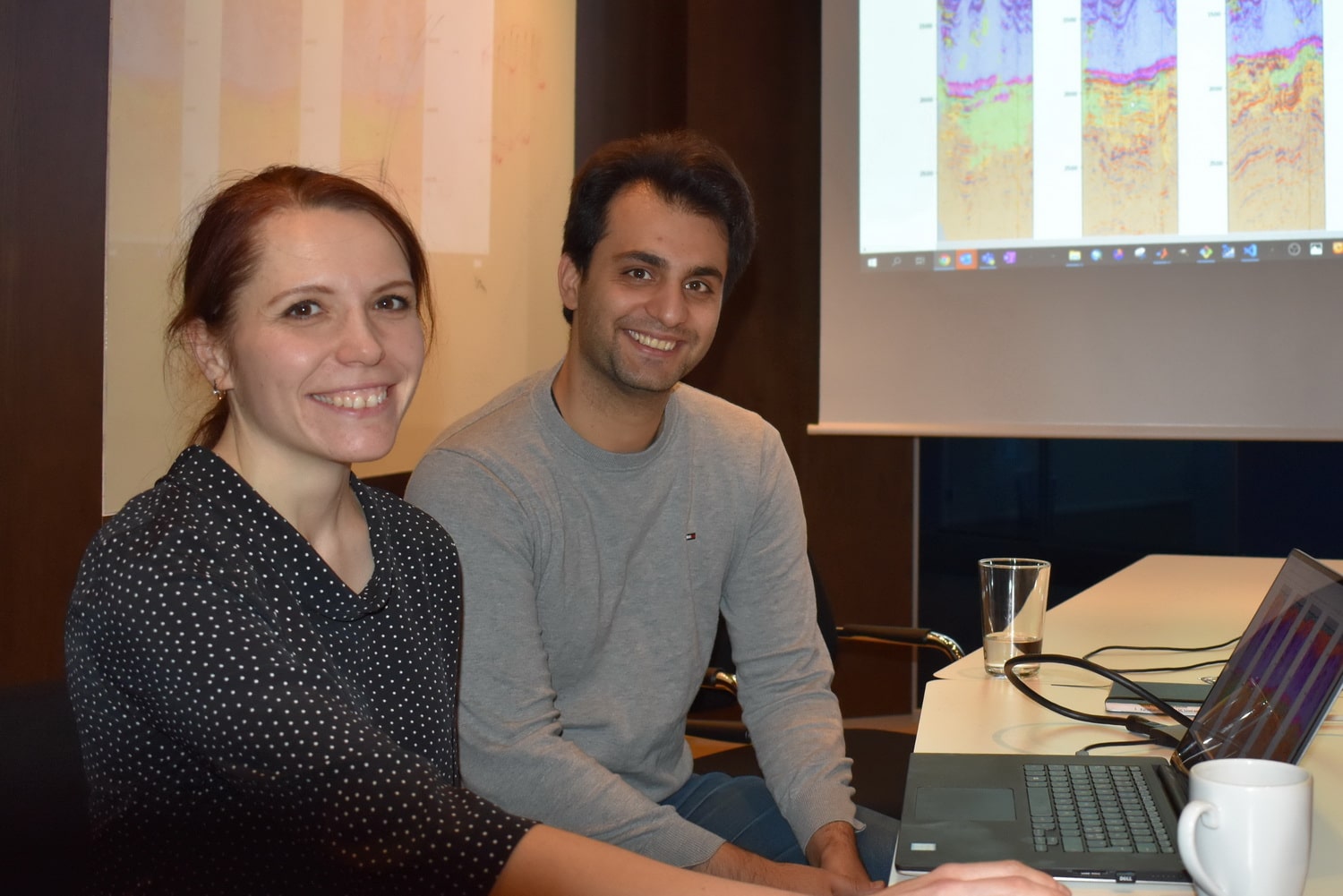Ever since computers began to become part of everyday life for geologists and geophysicists, many have feared the evolution. The frightening scenario has been that the rapid increase in engine power will make many of their tasks superfluous.
However, this has not happened. A number of companies are working instead to develop new tools, and no one should look at that as a threat. Instead, we are talking about great contributions to the workflow that provides a more interesting and effective everyday life.
At the Norwegian office in the centre of Oslo, project manager Lyudmyla Vynnytska and Hamed Fouladi in Bluware demonstrate a whole new way of interpreting seismic.
“We do not interpret horizons in the old, traditional way. We interpret layers, a form of pattern recognition,” Vynnytska proudly says.
“It is precisely the ability to recognize patterns in large and complex data sets that is the strength of this technology, and this also gives geologists the opportunity to get more out of the data,” she points out.
On the screen, she shows a seismic line from a project on the Dutch shelf where the technology is being tested.

Illustration: Bluware
Step by step
The first step is to enter stratigraphic information based on regional knowledge. So, the job starts with input from professionals.
The software then creates an initial iteration. Then it is time again for the expert to evaluate the result, provide further input and give the computer another chance to improve the result and show that it has learned.
“We can also call it assisted interpretation,” Fouladi adds.
And like this, it can continue. Continuous, incremental improvements through constantly new iterations based on geological knowledge of the area. We therefore understand that the end result is highly dependent on people. We have (fortunately) still not progressed so far that the machines take over completely.
“The big advantage is that the process goes exceptionally fast. We can build the project in a few minutes, and the machine spits the results out in a short time, almost instantaneously. Because the data can be retrieved from our platform, this is also cheap.”
“Not least, we believe we can get much more information out of the data in this way,” Fouladi points out.
Erik Holtar, with a broad background from several oil companies, in Norway as well as abroad, is an advisor in the project. His professional contribution is to provide geological consistency based on long experience. He leaves the programming to others.
“The fact that we can make quick updates means that this is nothing short of a revolution in seismic interpretation,” Holtar claims.
The demonstration we received gives the statement credibility. Equally, the software must be tested on multiple datasets with different types of geology to make sure it works well. Holtar quickly parries our bit of scepticism by citing an example from Brazil where the geology is much more complex.
“The largest fields in the Santos Basin are in carbonate reservoirs under thick salt layers. In this area too, the machine has come to surprisingly accurate and reliable interpretations in a very short time,” he points out.

Illustration: Bluware
New knowledge in seconds
Bluware has several other machine learning projects.
One of them deals with the interpretation of logs where the purpose is to identify lithologies. In just a few seconds, the machine can arrive at results you could only dream of because the job took too long. Geosteering is also an area where machine learning can be meaningful.
Our provoking question if the future will need petroleum geologists remains to be anawered. However, Holtar believes that we should rather ask what kind of geologists the future needs, and in what way they should work.
“Geoscientific expertise will always be important. There is no doubt about that. However, machine learning and artificial intelligence will make everyday life considerably more efficient. The geologists will thus be able to spend more of their time on professional work, and the job will be both more interesting and fun. Not least, the oil companies will be able to reduce costs and reduce the risk in both exploration and production.”
“The best of the best geologists will undoubtedly be able to see the future in the future,” says Erik Holtar.





